
Burning Up the Book : South LA Teen’s Production on Dickens Tells the Tale of Two Riots
“A riot is the voice of the unheard” Maxine Waters had said, about the most destructive civil disturbances in US history, the LA uprising of 1992. From its epicenter more than 25 years later, South LA teens unmute the history of their neighborhood through an unlikely instrument: a book. Centering on the story of an intellectually disabled boy and his talkative pet raven, the novel, Barnaby Rudge was written by their British creator Charles Dickens, who depicts the destruction of London in 1780 from the blended perspectives of the inhabitants of the city. The students, seniors at Foshay Learning Center, are taking their nineteenth century literature lesson out of the classroom and onto the streets, the stage and on the air—dropping an album, Never Say Die, A Sonic Tribute to the LA 1992 Rebellion that uses sonic field recordings to interpret the link between the histories of uprising in two cities, while premiering their show at the beginning of February. The show (2 nights, February 1/2, 6PM) is a theatrical and dance adaptation of the Dickensian story put up for their community and the public, and will be held at their South LA campus, Foshay Learning Center, located a few blocks away from the businesses, homes, avenues and intersections that sustained some of the worst damages of the 1992 events.
The album and production culminate an immersive study of the novel in students’ AP English Literature class, the latest of “LitLabs,” interdisciplinary and engaged teaching projects directed and taught by Jacqueline Barrios, their teacher. Students are scholars with University of Southern California’s Neighborhood Academic Initiative (NAI) program, a college pathway aimed at preparing first-generation students for higher education. NAI partners with the Dickens Project to support each LitLab journey, which guides students through the seemingly foreign world of the 19th century novel by assembling a cast of fellow travelers who weave a unique pedagogical experience for students to build bridges between their world and the world of Dickens. From literary scholars to resident dance artists, from Dickens enthusiasts to researchers in urbanism and architecture, from undergraduates to retirees—the cast of characters in the story of their learning mirrors the elaborate ones within the novels themselves.
The students’ album will officially “drop” in its own exhibition, LA 1992/London 1780: Sounding Out A Crowd, where a map installation and listening panels will contextualize and showcase the eleven original “singles” that students composed using an archive of found sounds from South LA and lyrics they wrote ala Dickens, riffing particularly off of his syntactic habit of writing long catalogs or lists, in his multi-perspectival descriptions of the Gordon riots. The singles represent students’ reworking of Dickens’ treatment of mob violence, an account that complicates the innocence or guilt of any single actor or point of view. Supported by UCLA’s Urban Humanities Initiative, a graduate research program blending architecture, urban planning and humanities methods, the album and the exhibition as a whole orchestrates an experience of this sonic documentary of student learning and the neighborhood. Visitors will see how students blended the novel’s storytelling with an experimental one in which they operate traditional literary tools alongside urban humanistic ones: field work, sound scavenging, digital editing, urban research, interviews and mental mapping.

Layering history: Collaged hand-drawn maps for the cover of the album, Never Say Die: A Sonic Tribute to the LA 1992 Rebellion. Cover design by AP literature student, Joel Avila- Salguero.
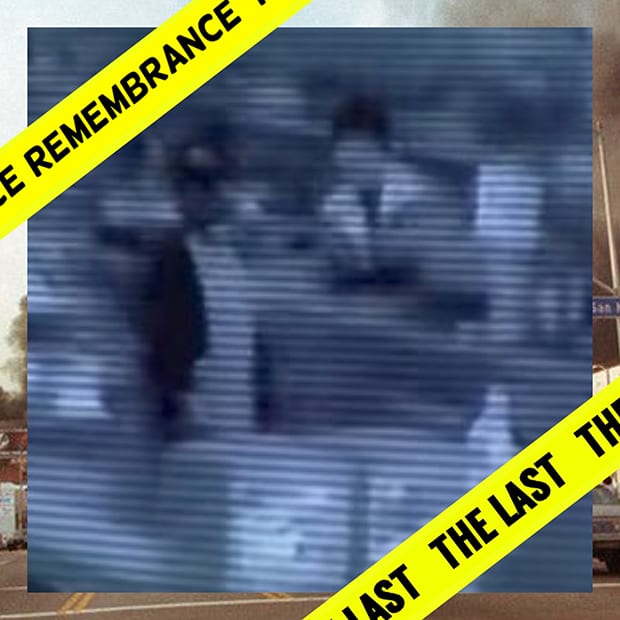
Remembering Latasha: Only thirteen days after the videotaped LAPD beating of Rodney King, South LA teenager Latasha Harlins was killed by Korean store owner, Soon Ja Du. Inspired also by the novel’s main character, this single unpacks the outrage and pain Harlins’ death ignited, and the intertwined communities impacted by her memory. Cover art by AP literature student.
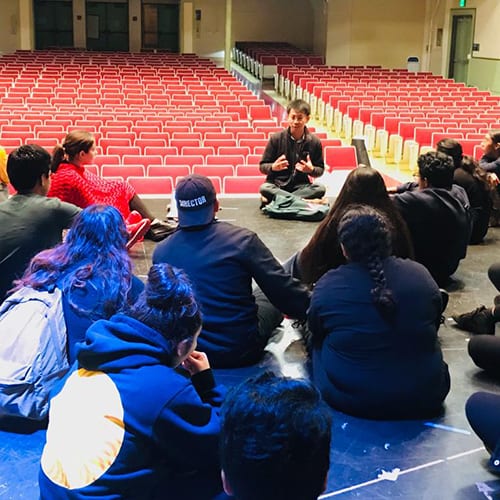
Designing Words: UCLA Masters Student in Architecture & Urban Planning Kenny Wong takes students through a model of their exhibition.
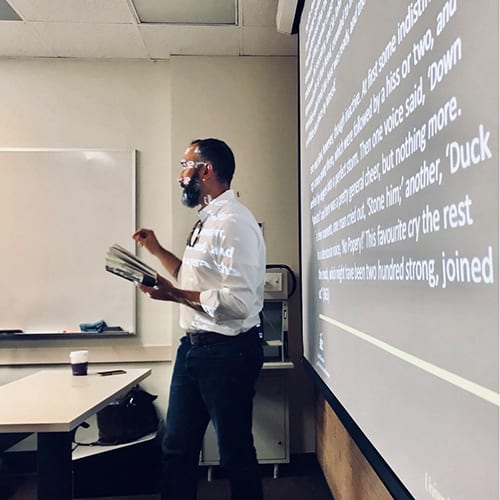
Close Reading the Crowd: USC Professor of English, Devin Griffiths, takes students through a key passage in the novel.

Alternative Routes: In this single from their album, students use sounds scavenged along the Vermont line to recall LA’s own cycle of history. Cover art by AP literature student.
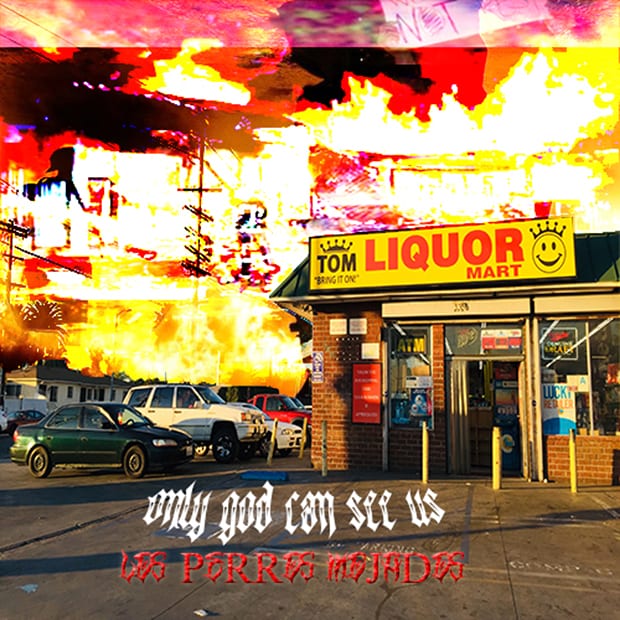
Intersections: This single takes the listener sonically to the starting site of the LA riots, the corner of Florence and Normandie. Cover art by AP literature student.
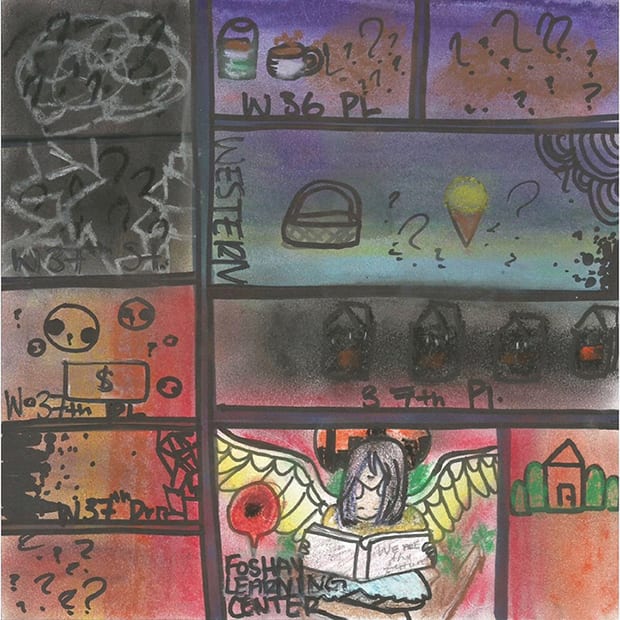
A Cartographic Novel: A student “thick map” reinterpreting grids as structural device for storytelling. All work by AP literature and LitLab students.
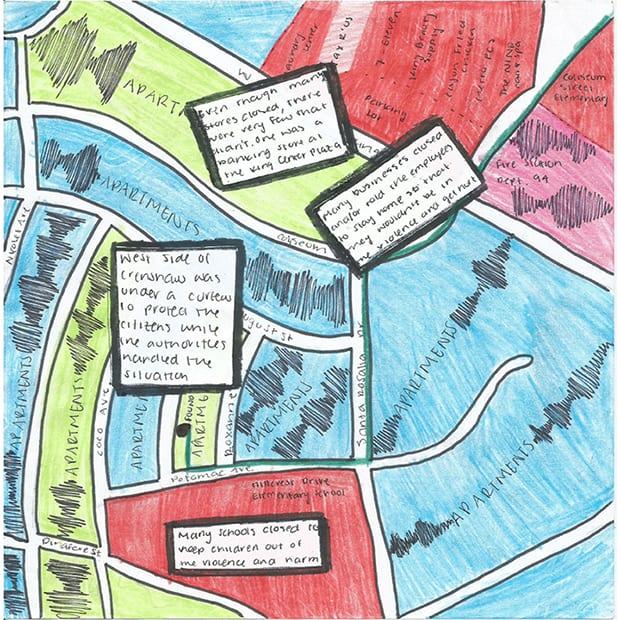
Different Coordinates: Sample student “thick map” inspired by their neighborhoods and the traces of the LA riots they discovered there.
This year’s first reading buddy, professor of English at the University of York John Bowen, happens to also be the editor of students’ Penguin editions. The current president of the Dickens Fellowship, Bowen addressed the students directly at the start of their study, and responded to each of their posted questions at the start of their reading. He had this to say about the teaching the novel: ”Rioters on the streets, and a city in flames. Mob rule or justified popular anger? Dickens’s great novel of riot, revolution and looting has never looked more contemporary than it does today.” Through Dickens, South LA students invite us to wonder, as Bowen asks, “Is it 1780, 1992 or 2019?”
In fact, when asked about how he connected to Barnaby Rudge, AP literature student Jonathan Antonio remarked that one of the novel’s main ideas is “what it means to be a part of something bigger.” Jonathan went on to clarify, “During my last two years of high school, two historical movements took took place: the nationwide student walkouts in response to the Parkland Shooting, and the UTLA strike against LAUSD as a result of the lack of support it offered to its teachers and students. The Gordon Riots, although having stood against the rights of a religious group, created a movement amongst those of lower socioeconomic classes in London 1780 that created a movement and a voice for others to hear. Overall, the novel helped me see the power of numbers in any circumstance.”
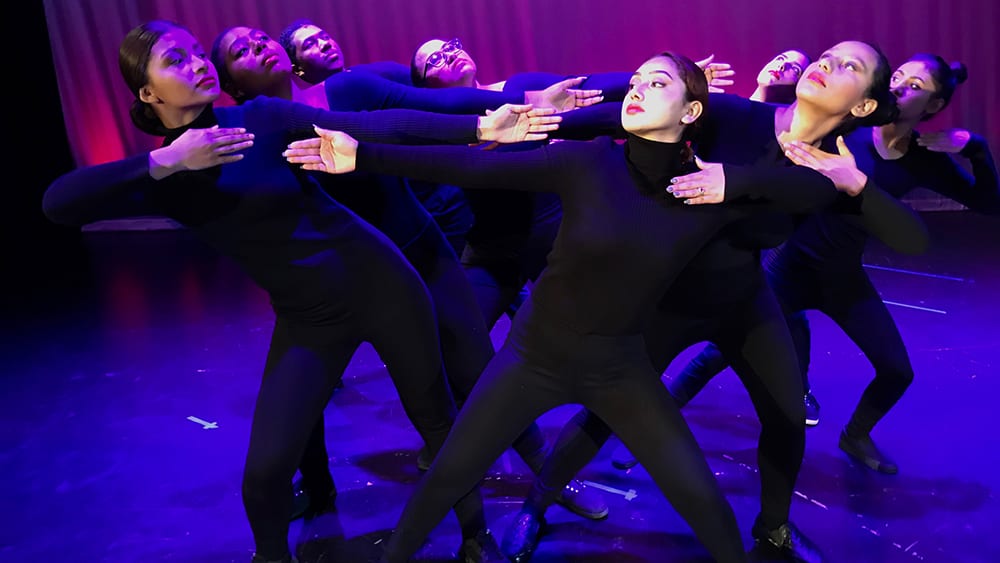
Embodied Connections: Student dancers explore literary characters in choreography inspired by the complicated parent-child relations in the novel.
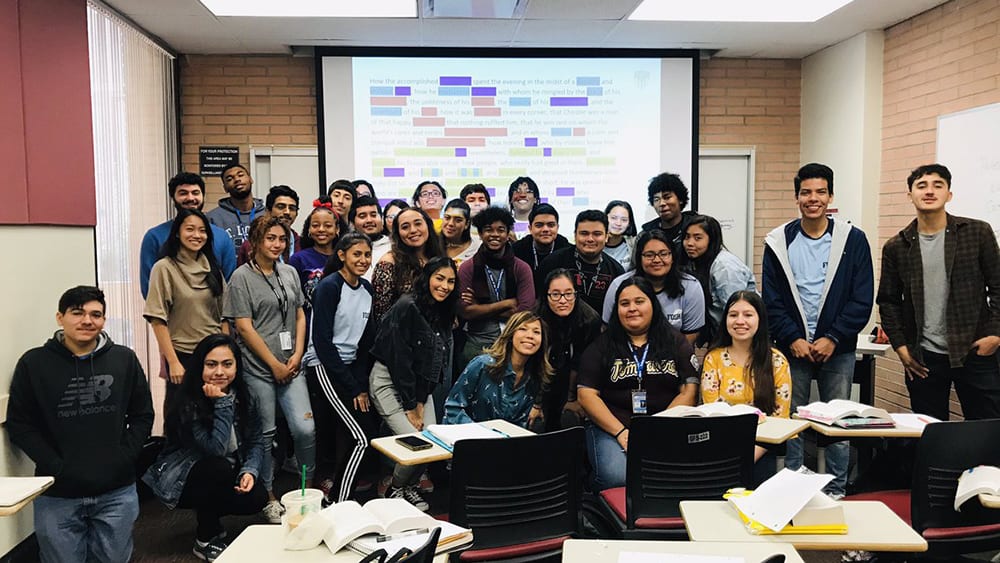
Open University: AP literature students at USC’s campus with their undergrad mentors redefine the borders dividing educational institutions.
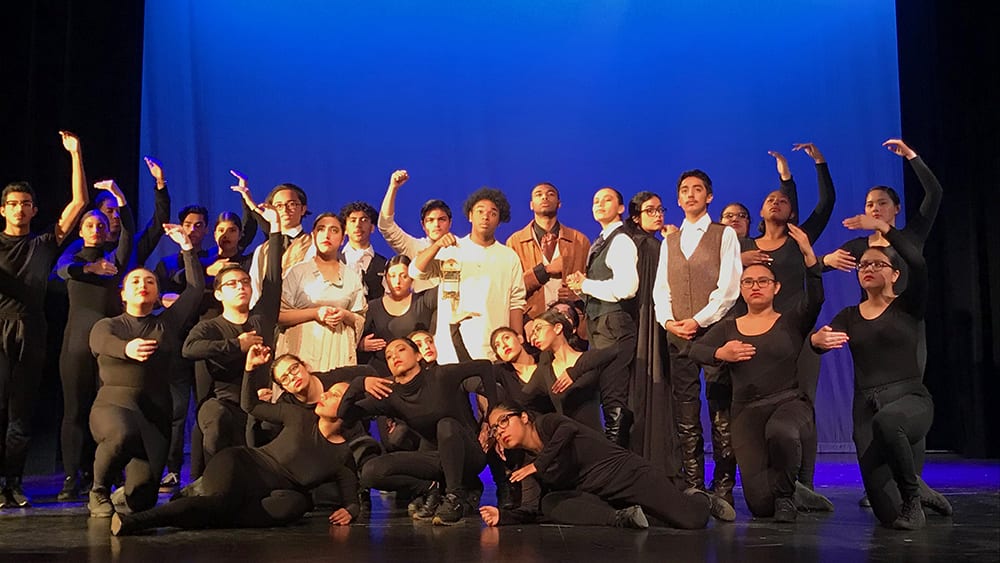
Standing Out In the Crowd: The ensemble, all students in South LA, at the eve ofBarnaby Rudge, coming soon February 1st and 2nd.
